ACS Macro Letters Xu Feng and Sun Xiaolong of Xi an Jiao Tong University: hydrogel transformation induced by chemical reaction through covalent adaptive network and its application in cell culture
abstract
Recently, a team of Professor Xu Feng and Professor Sun Xiaolong of Xi an Jiao Tong University reported an intelligent hydrogel system, which can be reconstructed through dynamic covalently adaptive network. The topological changes of the hydrogel structure are regenerated through the amine thiol perturbation, thiol thiol exchange, uncoupling reaction and the formation of covalent chemical bonds by two sulfides, resulting in a dynamically tunable characteristic. The stiffness of hydrogels can be regulated by dynamic covalent bonds, such as rheological measurements, indicating that some hydrogels exhibit self-healing and shear thinning characteristics.
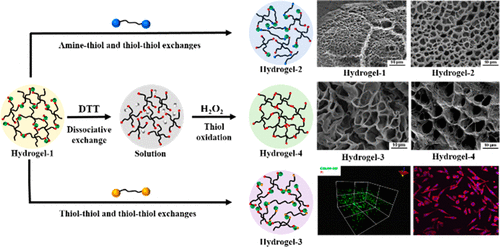
It is worth noting that the significant structural transition is achieved at room temperature under neutral aqueous conditions. These "smart" hydrogels show good biocompatibility, which can induce cell growth in two-dimensional cell culture and effectively serve as scaffolds for encapsulating and releasing human mesenchymal stem cells in three-dimensional cell culture. Therefore, the developed "intelligent" hydrogel system has great potential in biomedical applications such as tissue engineering and cell therapy. The related papers are published in ACS macro letters with the title of chemically triggered hydrogel transformations through valuable adaptive networks and applications in cell culture.
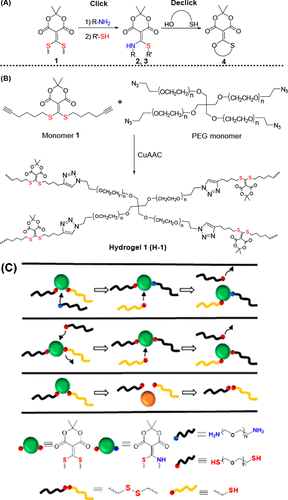
(a) click reactions of conjugated receptors perturbed by amine mercaptan and mercaptan mercaptan, and click reactions of newly formed amine mercaptan conjugated receptors added with DTT under aqueous conditions, (B) A schematic diagram of the exchange process between the H-1 azide terminated four arm poly (ethylene glycol) (PEG) and the alkyne terminated conjugated receptor 1, as well as between (c) H-1 and the representative chemical structure matrix, is formed by cuaac click reaction
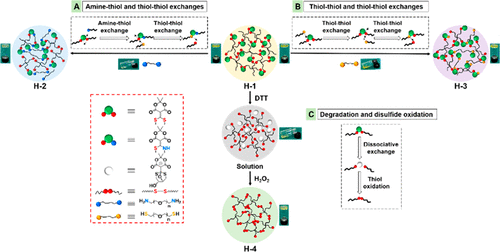
Schematic 2. schematic diagram of covalent adaptation of various hydrogels based on amine thiol / thiol mercaptan interference, uncoupling reaction and thiol two sulfides oxidation: (A) PEG two amine induced chemical bond disconnection and reconnection in H-, 1 matrix exchange through amine thiol and thiol thiol to generate H-2. (B) The chemical bond breaking and reconnection in H-1 matrix induced by PEG dithiol can obtain H-3 through mercaptan mercaptan exchange, and (c) DTT induced chemical bond breaking and hydrogen peroxide induced reconnection can produce H-4
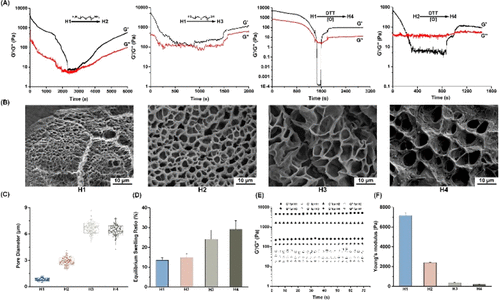
Fig. 1. rheology and characterization of hydrogel and its transformation.
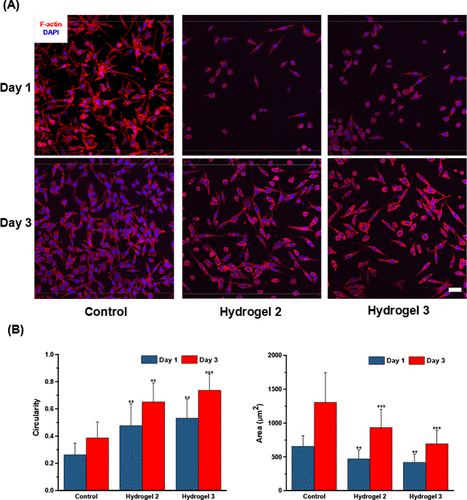
Figure 2. Two dimensional cell culture using H-2 and H-3( A) Confocal microscope images showed the morphology of SH-SY5Y cultured on the surface of H-2, H-3 and confocal disk( B) the diffusion area and circularity of SH-SY5Y cells calculated by ImageJ software showed the different diffusion of cells on different gel surfaces.
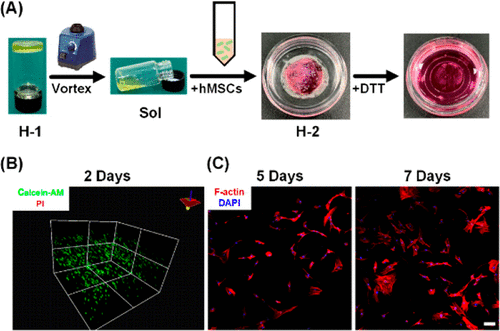
Figure 3. Cell encapsulation, distribution and growth( A) The schematic diagram depicts the trapping of cells in H-2( B) The maximum projection of human mesenchymal stem cells encapsulated 48 hours after confocal microscopy in H-2( C) After H-2 degradation, hMSCs were cultured for 5 and 7 days.
summary
The team proposed a new method to establish hydrogel conversion through covalent adaptive networks. Based on the CuAAC click reaction synthesis hydrogel, the topological structure of the new hydrogel can be changed by amine thiol interference, thiol thiol exchange, two sulfur bond and uncoupling reaction under neutral water conditions. The mechanical and microstructure characteristics and biocompatibility of the network were characterized and analyzed. Through the rearrangement of covalent adaptive networks, the system can form topological hydrogels with different stiffness, self-healing ability and good biocompatibility. In conclusion, the hydrogel system has great potential in biomedical applications such as tissue engineering and cell therapy.
This information is from the Internet for academic exchange only. If there is any infringement, please contact us to delete it immediately
18915694570
Previous: Chen Yongping, Southea


